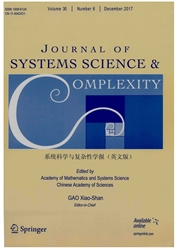

 中文摘要:
中文摘要:
面对风在多目标监视任务(MTST ) 为改正翅膀计划无人的天线车辆(UAV ) 的最佳的路径被担心。考虑 UAV 的最小的拐弯处半径, Dubins 模型被用来接近 UAV 的动力学。基于假设,在 MTST 计划 UAV 的问题的路径能作为旅行的 Dubins 被提出售货员问题(DTSP ) 。由考虑它的禁止地高的计算费用,在终端标题松驰下面的 Dubins 路径被介绍,它导致优化规模的重要减小和整个问题的困难。鉴于 UAV 路径上的风的影响,同时,虚拟目标的观点被建议。这个想法的申请成功地变换在风中从一种起始的配置计划问题到一个目标进发现一个先验的方程的最小的根的一个问题的 Dubins 路径。然后, Dubins 旅游被使用微分进化(DE ) 导出采用随机钥匙的编码的算法优化 waypoints 的访问顺序的技术。最后,建议算法的有效性和效率通过计算实验被表明。建议算法能生产的数字结果展览这个问题的高质量的答案。
 英文摘要:
英文摘要:
The optimal path planning for fixed-wing unmanned aerial vehicles (UAVs) in multi-target surveillance tasks (MTST) in the presence of wind is concerned. To take into account the minimal turning radius of UAVs, the Dubins model is used to approximate the dynamics of UAVs. Based on the assumption, the path planning problem of UAVs in MTST can be formulated as a Dubins traveling salesman problem (DTSP). By considering its prohibitively high computational cost, the Dubins paths under terminal heading relaxation are introduced, which leads to significant reduction of the optimization scale and difficulty of the whole problem. Meanwhile, in view of the impact of wind on UAVs' paths, the notion of virtual target is proposed. The application of the idea successfully converts the Dubins path planning problem from an initial configuration to a target in wind into a problem of finding the minimal root of a transcendental equation. Then, the Dubins tour is derived by using differential evolution (DE) algorithm which employs random-key encoding technique to optimize the visiting sequence of waypoints. Finally, the effectiveness and efficiency of the proposed algorithm are demonstrated through computational experiments. Numerical results exhibit that the proposed algorithm can produce high quality solutions to the problem.
 同期刊论文项目
同期刊论文项目
 同项目期刊论文
同项目期刊论文
 期刊信息
期刊信息
